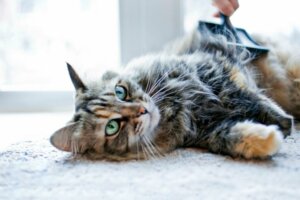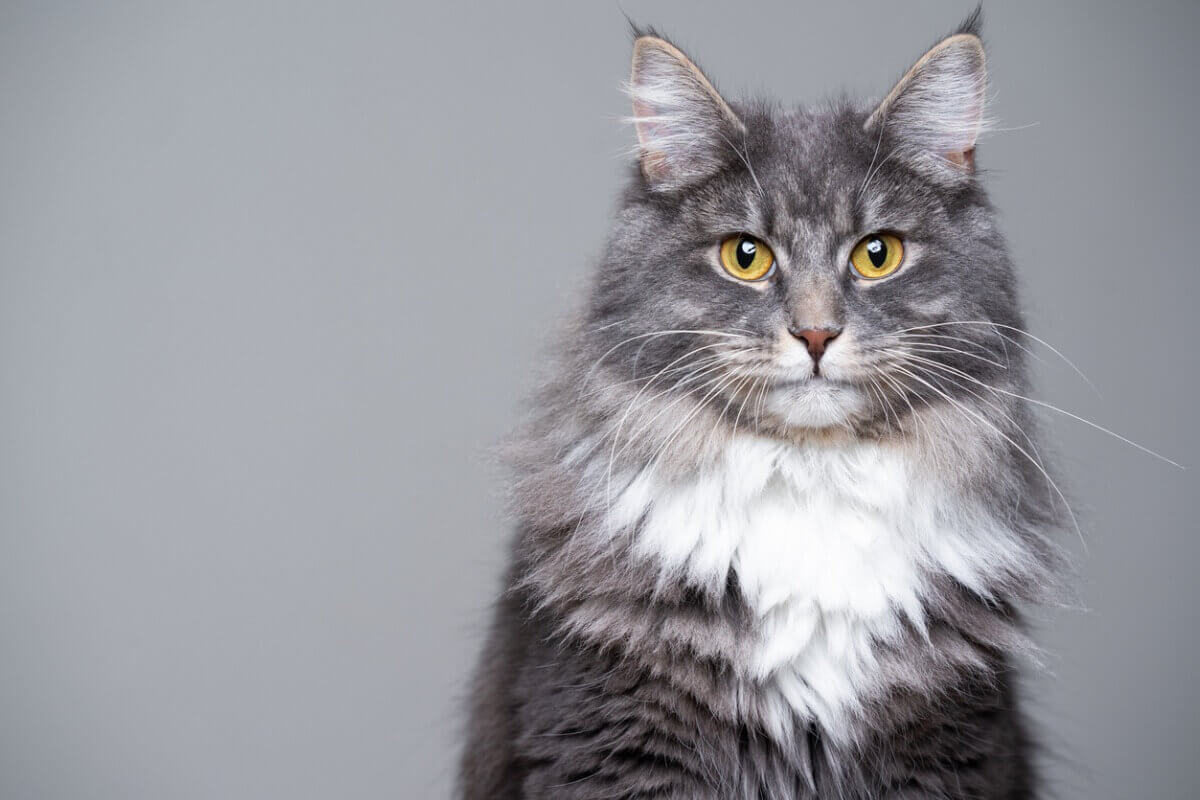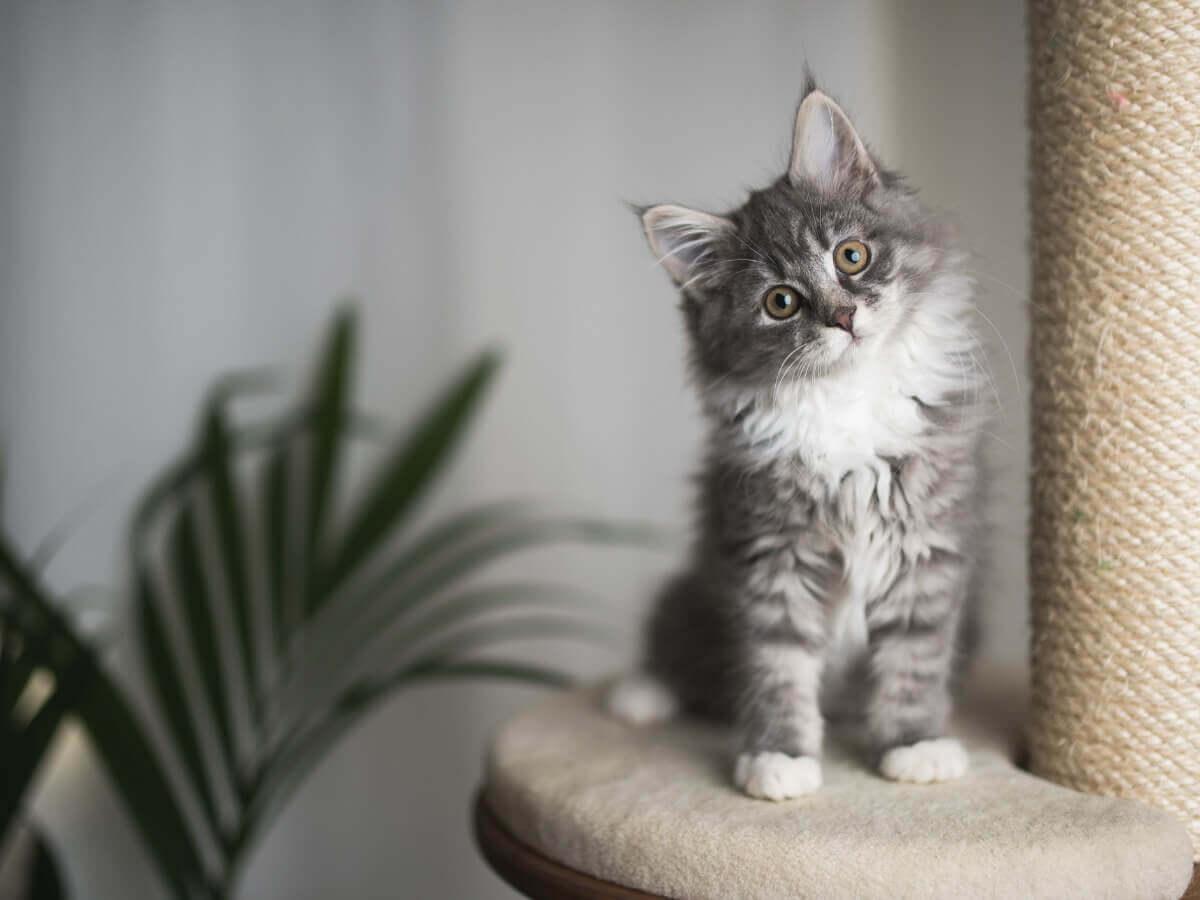How to Make Cat Hair Grow


Reviewed and approved by the biologist Samuel Sanchez
Fur is essential in almost all mammals, as it keeps the animal protected from the mechanical and thermal stressors of the environment. In addition, thick hair is an aesthetic component that some owners highly value, which is why many want to make sure cat hair is thick and healthy.
If you want the hair of your cat to grow healthily, you’ve come to the right place. Just the same, keep in mind that, if you follow the care protocol we’ll mention below and don’t obtain results, you should consult with a veterinarian to rule out underlying illnesses in the animal.
Why is it important to take care of cat hair?
Although you may think that cat hair care is something that’s merely aesthetic, there are fundamental reasons to care for it. Cats are characterized by having a very dense coat and this has several functions:
- Protection: In their natural environment, cats face many risks such as injuries, scratches, stings, and bites from other animals. Hair helps protect them.
- Thermal insulation: Cat hair protects them from high and low temperatures, which could cause burns if they come into direct contact with the skin.
- Their sense of touch: The hair of cats, especially their whiskers and the fur that’s close to them, participates in a very special way in the way they perceive their environment. Through these structures, they obtain a lot of information that allows them to be safe.
- Communication: Unable to speak, cats communicate through body language, in which each hair is very important.
When you take care of your cat’s hair, in addition to helping it look clean, elegant, and healthy, you’re helping it to be safe and protected in the habitat that you’ve built for them.

Growth cycles
To optimally care for feline fur, it’s important to identify growth cycles. Yes, cat hair, like our own hair, goes through different stages. These are the following:
- The anagen phase: This is the phase of rapid hair growth.
- Catagen phase: This is the moment in which the hair stops growing.
- Telogen phase: This is also known as the phase in which the hair sheds, that is, in which it falls out to make way for new hair. Basically, the new hair pushes out the old, causing the cycle to repeat.
Still, cat hair can fall out for multiple reasons, and many don’t necessarily have to do with growth cycles. One of them has to do with stress. Experts point out that the main clinical sign of this illness is alopecia, which involves excessive hair loss and an increase in the frequency of licking in the same area.
If you don’t pay attention to cats with this condition, in the long term, they could become completely bald.
At the same time, there’s a disorder in the cycle known as telogen effluvium. This term refers to a disorder in which the anagen phase doesn’t begin. However, when the cause of the stress that produces it disappears, new hair grows once again, which pushes out the hair from the telogen phase.
At that time, generalized alopecia occurs that, contrary to that described above, doesn’t need treatment. In this condition, you simply need to let the new hair grow, and the cycle resumes.
Cat hair care
To take care of a cat’s hair, there’s no magic formula. In fact, there are different alternatives that can be applied at the same time to obtain a satisfactory result. In any case, take into account that, depending on the breed, each cat has specific conditions, it’s a good idea to discuss any approach with your veterinarian.
As we all know, just as with humans, food is vital. We’ll tell you what ingredients must be present in the diet of a feline, not only for the well-being of its hair but also for its integral health.
Protein
Cats are carnivores by nature. Domestic cats eat dry food, which must have a considerable quantity and quality of protein of animal origin. The nutritional composition of the food will depend on whether the cat’s body can process and use it better.
Proteins, being composed of essential amino acids, maintain the general well-being of the cat. Lysine, specifically, is the one that contributes the most to hair growth. Providing cats with low-quality protein will slow down hair growth. As studies indicate, lysine deficiency can also promote epidermal lesions.
Vitamins
Vitamin contribution in a cat’s diet is also essential. Beyond the welfare of their hair, experts point out that vitamins help preserve the health of the animal and promote longevity in felines. Essential vitamins include vitamins A, D, K, D, and B complex, as well as thiamine, riboflavin, niacin, biotin, taurine, and folic acid.
Minerals
Every animal diet must have the presence of minerals, as these aren’t produced by the body. In small amounts, they’re essential to helping pets regenerate tissues, synthesize hormones, and trigger the necessary chemical reactions within their body. The essential minerals are calcium, sodium, magnesium, phosphorus, potassium, copper, iodine, and selenium, among others.
Tips for cat hair growth
A shiny, healthy, and silky coat is every cat lover’s dream, but it also translates to good health. In addition to the nutritional recommendations that we described in the previous section, you can follow other tips so that a cat’s hair grows healthy.
Avoid stress
As we’ve seen, stress in cats causes serious effects, as it impacts the immune system and lowers defenses. In fact, chronic stress can affect the liver, the function of other organs, and lead to a diminished quality of life.
To combat stress in cats, you can increase the environmental enrichment, play with them, give them treats, and pet them.
Daily brushing
Brushing cats must be constant. This act helps to control the dirt and body oil that begins to accumulate, as well as the dead hair that the cat doesn’t remove with its tongue. It also removes dead skin and stimulates blood circulation.
If other responsibilities don’t allow you to carry out daily brushing, you can do it once or twice a week. This way, the cat’s hair will remain shiny and healthy.
Adequate food
A healthy diet for cats should be made up of at least 30% quality animal protein, followed by minerals, vitamins, and fatty acids. The latter are involved in the absorption of vitamins and minerals, help to regenerate cells, and make them function more efficiently.
Deworming
Deworming is very important, both internally and externally. Both protect the pet from the attack of parasites that can cause dermatological problems. Such is the case of mites, which cause scabies and hair loss in the affected areas.

Care is the key to the growth of cat hair!
The growth of a cat’s hair is linked to the general care we give to our pet. Ensuring that they eat well and healthily is key number one, as well as ensuring that parasites and pests that contaminate their skin don’t affect them. And, of course, don’t forget to take time to allow the animal to relax.
By following these tips, you can help your cat’s hair grow strong and healthy. Remember that, if you’re in the habit of bathing your pet, you should use proper hygiene products – preferably without chemicals – to take care of its skin and coat.
All cited sources were thoroughly reviewed by our team to ensure their quality, reliability, currency, and validity. The bibliography of this article was considered reliable and of academic or scientific accuracy.
- Guías nutricionales para alimentos completos y complementarios para perros y gatos. Federación Europea de Fabricantes de Alimentos para Animales de Compañía.
- Lorente, C., Ventura, J. Efluvio telógeno en un gato. Dermatología. Vol. 26, n° 2, 2006.
- Baciero, G. El estrés en el gato. Nutrición.AV.
This text is provided for informational purposes only and does not replace consultation with a professional. If in doubt, consult your specialist.